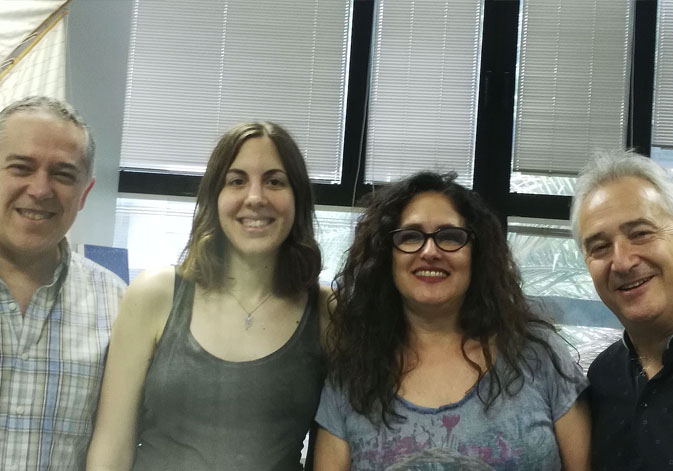
A research team from the University of Valencia published this Thursday in 'PLoS ONE' magazine a study that for the first time shows with very specific spatial statistics techniques that the risk of partner violence against women and child maltreatment has a common geographic distribution. The work, carried out in Valencia, also concludes that the neighbourhoods in which these types of violence occur have the same socio-economic characteristics and that only in 10.5% of the areas the two risks do not coincide.
“No study to date had analysed whether the occurrence of gender-based violence and child maltreatment –considered by the WHO as important public health problems and a violation of human rights– would also spatially occur, that is, if they overlap in the same areas and if the characteristics of these areas of cities that explain the risk of both types of violence are the same”, said Enrique Gracia, Professor of Social Psychology at the University of Valencia and first author of the article.
For the first time, the relationship between partner violence against women and child maltreatment in very small geographical areas has been analysed, such as the 552 census sectors of Valencia, areas of around 630 and 2,845 inhabitants. Thus, these advanced spatial statistical techniques have been combined with disease maps to illustrate the distribution of the risk of these two social problems in the city neighbourhoods, and their overlapping degree.
Research explains that the overlapping of child abuse and partner violence against women occurs not only individually (for example, having been the victim of maltreatment during childhood and perpetrator of partner violence as an adult) or in the family (households where abuse occurs both against minors and against women), but it also occurs in the neighbourhood.
The study by Enrique Gracia, Marisol Lila and Miriam Marco, from the Department of Social Psychology, and by Antonio López-Quílez, from the Department of Statistics and Operational Research of the University of Valencia, also highlights that areas with a lower economic and educational level, with higher rates of crime, with greater immigration and greater residential instability are those where there is a greater risk of these two types of violence, and where these risks overlap.
“Our results suggest that certain neighbourhood characteristics contribute to create a toxic social environment that increases the risk of violence in intimate relationships, regardless of whether this violence is inflicted on minors or partners”, says Enrique Gracia, who, in addition, finds “important spatial inequalities in the distribution of the risk of these types of violence”. Thus, the article shows that areas with high risk of overlapping violence are located mainly in the coastal strip of Valencia, and bordering the Eixample to the south, north and west.
The demonstration of this overlapping is particularly relevant, because it points out that these two types of domestic violence are interconnected problems, and their prevention and intervention in them must take into account the community analysis in the design and planning of integrating measures that reduce both types of violence with the same social intervention agenda. “In this sense, our study provides an important tool for the epidemiological monitoring of these two social problems, through the detection of variations in the risk, as well as in the evaluation of the effectiveness of the initiatives for the reduction of hat risk”, says Enrique Gracia.
Methodology
The study used as a neighbourhoods indicator 552 census sectors – the smallest administrative area available –, during 2013. The research team of the University used protection orders for cases of gender violence dictated between the Years 2011 and 2012 (1,450) provided by Valencia Local Police. Also, unprotected children cases (588) occurred during the same period, facilitated by the Children’s Area of the City Council of Valencia Social Services. These variables were combined using advanced techniques of spatial statistics and disease maps.
As for the socioeconomic indicators used to analyse each neighbourhood are economic status, educational level, degree of police intervention, concentration of immigrant population and residential instability, with data provided by the Statistical Office of the City Council of Valencia and the Valencia Local Police.
This study has been carried out with funds from the Ministry of Economy and Competitiveness, and the Institute for Women’s Affairs.
Article:
Gracia E, López-Quílez A, Marco M, Lila M (2018): «Neighborhood characteristics and violence behind closed doors: The spatial overlap of child maltreatment and intimate partner violence». PLoS ONE 13(6): e0198684. Enllaç: https://doi.org/10.1371/journal.pone.0198684
















